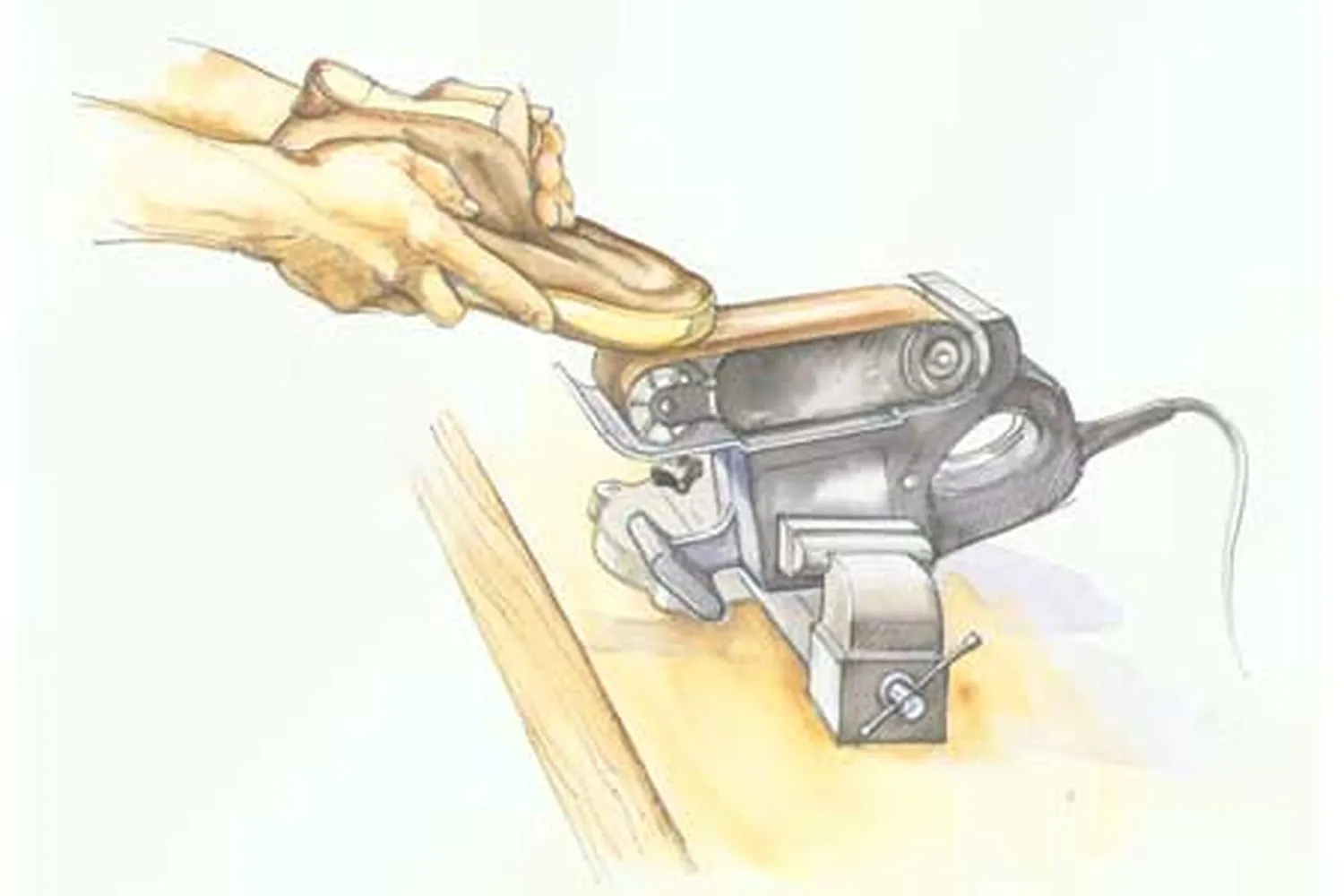We may be compensated if you purchase through links on our website. Our team is committed to delivering honest, objective, and independent reviews on home products and services.
Sanding belts are essential tools for woodworkers and DIY enthusiasts, but they can become a nuisance when they get clogged with dust and debris. If you care about precision, keeping a clean sanding belt is a must. However, many homeowners don’t know how to adequately maintain their belt sander—and this common blind spot results in suboptimal sanding and damaged equipment.
In this guide, we’ll show you DIY cleaning techniques, preventive measures, and how to know when it’s time to replace your sanding belt.
Common Causes of Clogged Sanding Belts
Understanding the factors that lead to clogged sanding belts can help you prevent future clogs. The most common culprits are wood dust, resin buildup, and improper storage. Let’s address each issue in detail below.
Wood Dust Accumulation
As you sand, fine particles of wood become trapped in the belt’s abrasive surface. Over time, this buildup can reduce the belt’s effectiveness, making it harder to achieve a smooth finish. If you let too much dust accumulate, it can cause lasting damage to your sander.
Resin Buildup
Some types of wood, particularly softwoods like pine, contain natural resins that can build up on the sanding belt. These sticky substances trap even more dust and debris, accelerating clogging and making the belt less effective.
Improper Storage
We always recommend storing your tools properly, especially when they’re power tools. Exposure to moisture or extreme temperatures can cause the abrasive particles on the belt to break down, making it less abrasive and more likely to clog. Likewise, the backing can warp, ruining the belt’s overall integrity.
DIY Methods for Cleaning Sanding Belts
If your belt sander clogs, don’t worry—you can fix it yourself. The techniques below can help restore your belts to their original condition, saving you money and extending the life of your tool.
Using a Belt-Cleaning Stick
An abrasive belt cleaning stick is a specialized but highly affordable tool that removes debris from sanding belts. In our opinion, it’s also the most practical way to restore your belt.
To use it, clamp your sander upside down to a workbench, turn it on, and gently press the cleaning stick against the running belt. Move the stick from side to side to clean the entire surface.
The Crepe-Sole Shoe Technique
One frugal alternative to a belt cleaning stick is using an old crepe-soled shoe. These shoe soles feature several latex layers, which give it a porous, eraser-like texture.
The crepe-sole show method involves the following steps:
- Clamp your sander upside down to a workbench.
- Turn on the sander.
- Gently press the crepe sole against the running belt.
- Slowly move the shoe from side to side to clean the entire abrasive surface.
Important: Remove and discard the shoelace beforehand to prevent it from getting caught in the running sander.
Compressed Air Method
Applying compressed air is another effective way to clean sanding belts. This method excels at removing loose dust and debris. Simply use an air compressor with a nozzle attachment to blow air across the belt’s surface.
Note that although an air compressor is great for superficial cleaning, it won’t dislodge foreign particles that are ground into the belt.
Regular Sanding Belt Maintenance Practices
Maintaining your tools is crucial to their longevity, and your belt sander is no exception. Although routine tool maintenance may not be fun, neither is dealing with a broken belt sander.
Here’s how to keep your belt sander in good condition:
- Clean the belts after each use
- Rotate the belts between uses to ensure even wear
- Inspect the belts for damage before each use
- Use dust collection systems to minimize debris buildup
- Store your sander and belts in a cool, dry place that’s free of dust
Recognizing When To Replace Your Sanding Belt
While proper cleaning and maintenance can extend the life of your sanding belt, you will eventually have to replace it.
We strongly recommend replacing your belt immediately if you notice any of the following signs:
- Decreased sanding performance
- Persistent clogging despite recent cleaning
- Uneven sanding results
- Unusual noise or vibration during use
- Visible wear or tears in the belt
Choosing the Right Sanding Belt for Your Project
Not all sanding belts are equal. Pay close attention to the belt’s grit when shopping for a replacement.
Grit Selection Guide
In the context of sanding, “grit” refers to the size of the abrasive particles.
Here’s a general guide to grit sizes and their best uses:
- Coarse grit (40 to 60): For heavy material removal and initial sanding
- Medium grit (80 to 120): For general-purpose sanding and smoothing
- Fine grit (150 to 180): For final sanding before applying the first finishing coat
- Very fine grit (220 and above): For ultra-smooth finishes or between finishing coats
Work smarter, not harder, by choosing the right sanding belt for your project. For instance, if you use fine grit for initial sanding, it’ll take forever, and you’ll wear out the sandpaper quickly.
Safety Precautions When Cleaning Sanding Belts
While cleaning sanding belts is generally a safe process, we strongly recommend taking the following precautions:
- Always unplug your sander before handling the belt for cleaning or inspection.
- Follow the manufacturers’ guidelines for the sander and any cleaning products you use.
- Keep your hands clear of moving parts when using methods that require you to run the sander.
- Use a dust mask to avoid inhaling particles during the cleaning process.
- Wear safety glasses to protect your eyes from debris.
When in doubt, refer to the Occupational Safety and Health Administration’s belt sander training guide for information on the machine’s parts and potential hazards. Remember, you can never be too careful when using power tools.

